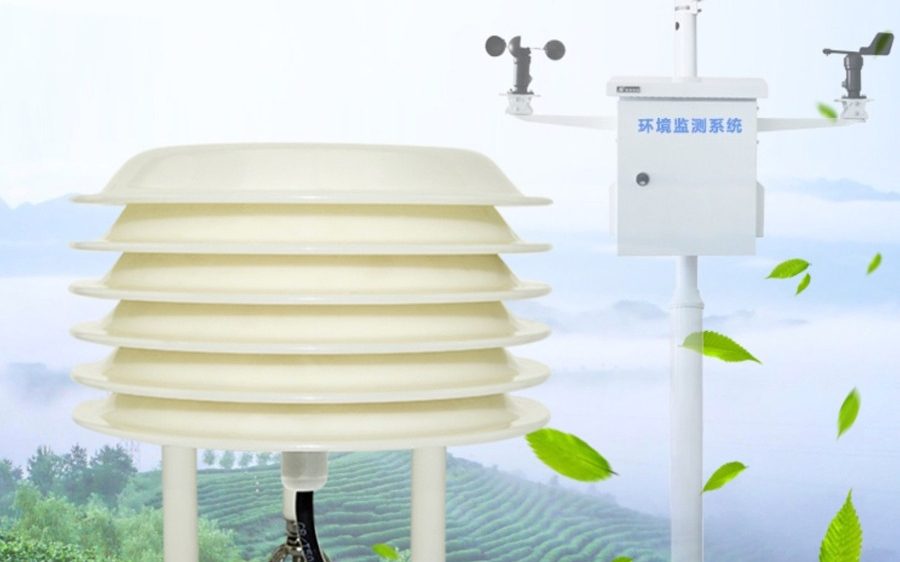Air quality sensors are often used to monitor the concentration of pollutants in the air and are an important part of air purifiers and fresh air systems.
What is is PM2.5?
PM2.5 is also known as fine particles, fine particles, and fine particles. PM2.5 refers to particulate matter with aerodynamic equivalent diameter less than or equal to 2.5 microns in ambient air. It can be suspended in the air for a long time, and the higher its concentration in the air, the more serious the air pollution is. Although PM2.5 is only a very small component in the composition of the earth’s atmosphere, it has important effects on air quality and visibility. Compared with the coarser atmospheric particles, PM2.5 has a small particle size, a large area, and strong activity. It is easy to carry toxic and harmful substances (for example, heavy metals, microorganisms, etc.), and it has a long residence time in the atmosphere and a long transportation distance. Therefore, it has a greater impact on human health and the quality of the atmospheric environment.
What is the PM10 ?
Total suspended particulate matter refers to the general term for solid and liquid particles floating in the air, with a particle size range of about 0.1-100 microns. Some particles can be seen by the naked eye due to their large size or black color, such as soot. Some are small enough to be seen with an electron microscope. Particles with a particle size below 10 microns are usually referred to as inhalable particulate matter, also known as PM10.
PM2.5 VS PM10
PM2.5 refers to particulate matter in ambient air with an aerodynamic diameter of less than or equal to 2.5 microns. It is also called fine particulate matter and particulate matter that can enter the lungs (can enter the lungs).
PM10 is a particle with a particle size equal to less than 10 microns, which refers to the general term for solid and liquid particles floating in the air. It is also called inhalable particles.
Compared with PM10, PM2.5 has small particle size, large specific surface area, strong activity, and is more likely to carry toxic and harmful substances (for example, heavy metals, microorganisms, etc.), and has a long residence time in the atmosphere and a long transportation distance. At the same time, it is more likely to stay in the terminal bronchioles and alveoli, so PM2.5 from the same source has a greater impact on health than PM10.
What is PM2.5 sensor?
PM2.5 sensor is also called dust sensor, dust sensor. The PM2.5 sensor can be used to monitor the dust concentration in the surrounding air, that is, the PM2.5 value.
PM2.5 PM10 sensor working principle
The PM2.5 sensor can be used to detect the concentration of particulate matter in the air around us, that is, the size of the PM2.5 value. The industrial-grade general particle concentration transmitter adopts the principle of laser scattering measurement. When a beam of parallel monochromatic light is incident on the particle field to be measured, it is affected by scattering and absorption around the particle, and the light intensity decays. Through the unique dual-frequency data acquisition technology for sieving, the number of particles with equivalent particle size per unit volume is obtained, and a scientific and unique algorithm is used. Calculate the mass concentration of particles of equivalent particle size per unit volume.
PM2.5 PM10 sensor application
PM2.5 PM10 sensors can be used in outdoor weather stations, dust monitoring, libraries, archives, industrial plants and other places that require PM2.5 or PM10 concentration monitoring.
PM2.5 PM10 sensor application case scenario
1. Decoration pollution, air detection in the office
2. The Occupational Exposure Limit (OEL) for the detection of hazardous substances in the workplace is the exposure limit value of occupational harmful factors, which means that the long-term repeated exposure of workers in the process of occupational activities will not cause acute or chronic harmful health effects to the body the allowable exposure level. The occupational exposure limits of chemical factors can be divided into three categories: time-weighted average allowable concentration, maximum allowable concentration and short-term exposure allowable concentration.
3. Boiler atmosphere and industrial kiln detection Boiler air pollutants include soot, sulfur dioxide and nitrogen oxides in boiler flue gas and flue gas blackness. Pollutant emissions mainly come from coal-fired, oil-fired and gas-fired boiler emissions, as well as bagasse , sawdust, rice husk, bark and other fuel boiler emissions, the standard can be implemented with reference to the maximum allowable emission concentration of air pollutants from coal-fired boilers in the national standard.
4. Detection of industrial waste gas emitted by factories Industrial waste gas includes organic waste gas and inorganic waste gas. Industrial waste gas has different treatment methods according to its exhaust air volume, temperature, concentration and its own chemical and physical properties.
※Note: As one of the earliest sensor manufacturer, SenTec provide a wide variety flow environmental measurement solutions, such as T&H sensor, soil sensor, wind speed sensor, solar radiation sensor, light sensor, rain & snow sensor, water quality sensor, all in one weather station etc.
For specific PM2.5 1.0 10 air quality sensor transmitter price, please contact our sales engineer.






